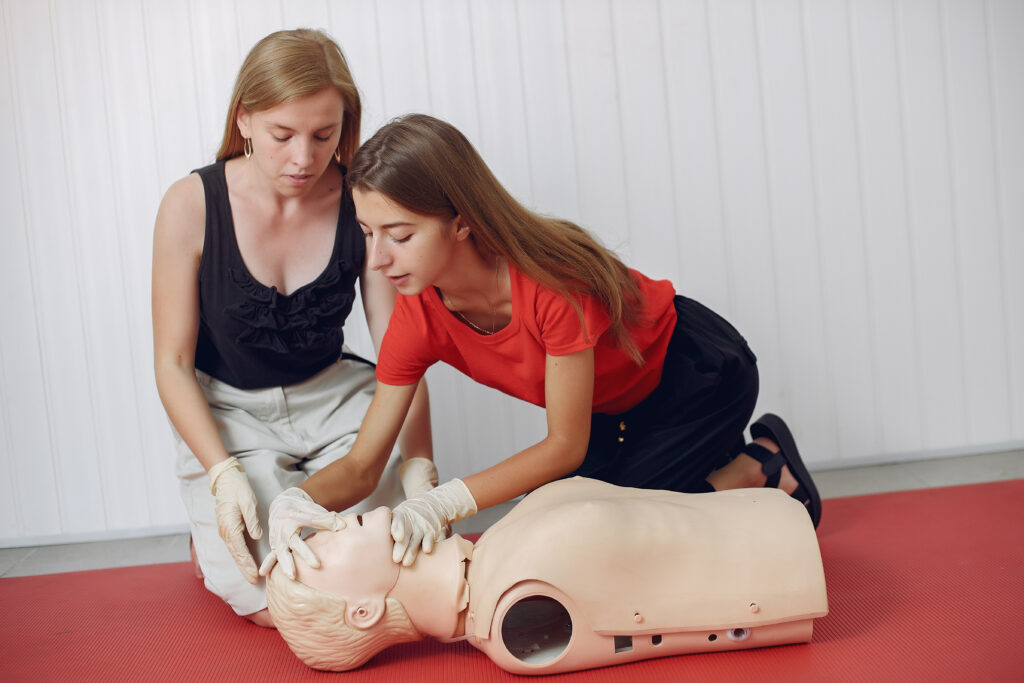Cardiopulmonary Resuscitation (CPR) is a life-saving technique used when someone’s heart has stopped beating, or they are not breathing normally. CPR provides support for circulation and breathing until emergency medical services arrive. This guide provides a step-by-step approach to performing CPR.
Important Note: While this information can be helpful, it is not a substitute for certified CPR training. Hands-on practice and expert instruction are essential for learning and performing CPR effectively. Please enroll in a certified CPR course to gain the necessary skills.
Step-by-Step CPR Guide
1. Assess the Situation and Ensure Safety
- Before approaching the person, ensure the scene is safe for you and the victim. Remove any immediate dangers, such as fire or exposed electrical wires.
2. Check for Responsiveness
- Gently tap or shake the person’s shoulder.
- Shout loudly, “Are you okay?” or “Hey! Hey!”
- Observe for any response, such as movement, opening eyes, or speaking.
3. Activate Emergency Response System
- If the person is unresponsive and not breathing or only gasping, immediately call or have someone else call the local emergency number (911 in Canada).
- Provide the dispatcher with the location, the nature of the emergency, and the number of victims.
- If you are alone and have a mobile phone, call 911 first, or as soon as possible, and then begin CPR.
4. Check for Breathing
- After ensuring unresponsiveness, check for normal breathing.
- Look for chest rise and fall for no more than 10 seconds.
- If the person is not breathing or only gasping (i.e., not breathing normally), begin CPR.
5. Perform CPR
-
Position the Person:
- Carefully place the person on their back on a firm, flat surface.
-
Hand Placement for Chest Compressions:
- Kneel beside the person’s chest.
- Place the heel of one hand on the center of the person’s chest.
- Place the heel of your other hand on top of the first hand.
- Interlock your fingers.
-
Body Position:
- Position your body directly above your hands.
- Keep your arms straight.
-
Chest Compressions:
- Push hard and fast in the center of the chest.
- Compress the chest at a rate of 100-120 compressions per minute.
- Compress to a depth of at least 2 inches (5 cm) but no more than 2.4 inches (6 cm) for adults.
-
Rescue Breaths (If Trained and Willing):
- After 30 chest compressions, give 2 rescue breaths.
- Open the airway using the head-tilt chin-lift maneuver (unless a spinal injury is suspected).
- Place one hand on the person’s forehead and gently tilt their head back.
- Place the fingers of your other hand under the bony part of the chin and lift it up.
- Pinch the person’s nose closed.
- Take a normal breath and seal your mouth over the person’s mouth.
- Give 1 breath, lasting about 1 second, and watch for chest rise.
- Give a second breath, watching for chest rise.
-
CPR Cycles:
- Continue cycles of 30 chest compressions and 2 rescue breaths until:
- Emergency medical services arrive and take over.
- The person shows signs of life, such as breathing.
- You are too exhausted to continue.
- Continue cycles of 30 chest compressions and 2 rescue breaths until:
6. Use an AED (Automated External Defibrillator) If Available
- If an AED is available, retrieve it and use it as soon as possible.
- Turn on the AED and follow the voice prompts.
- Apply the AED pads to the person’s bare chest as indicated by the diagrams on the pads.
- Ensure no one is touching the person while the AED is analyzing the heart rhythm or delivering a shock.
- If the AED advises a shock, deliver it.
- Immediately resume CPR after the shock (or if no shock is advised).
- Continue to follow the AED’s prompts.
Important Considerations
- CPR Quality: Effective CPR is crucial. Focus on proper hand placement, compression rate, depth, and allowing for complete chest recoil.
- Minimizing Interruptions: Try to minimize interruptions in chest compressions.
- Teamwork: If there are other responders, work together to perform tasks efficiently.
- Updates: CPR guidelines are updated periodically. Stay current with the latest recommendations.
Disclaimer:
This information is intended for educational purposes and provides a general overview of CPR. It is not a substitute for certified CPR training. Hands-on practice with certified instructors is essential for developing the skills and confidence to perform CPR effectively.




